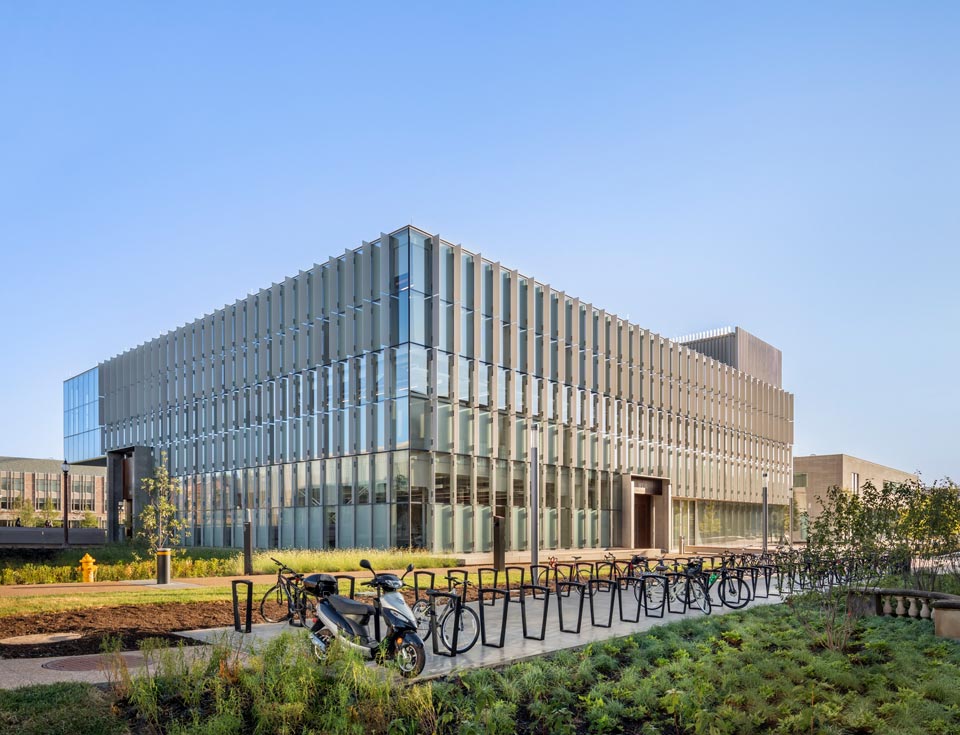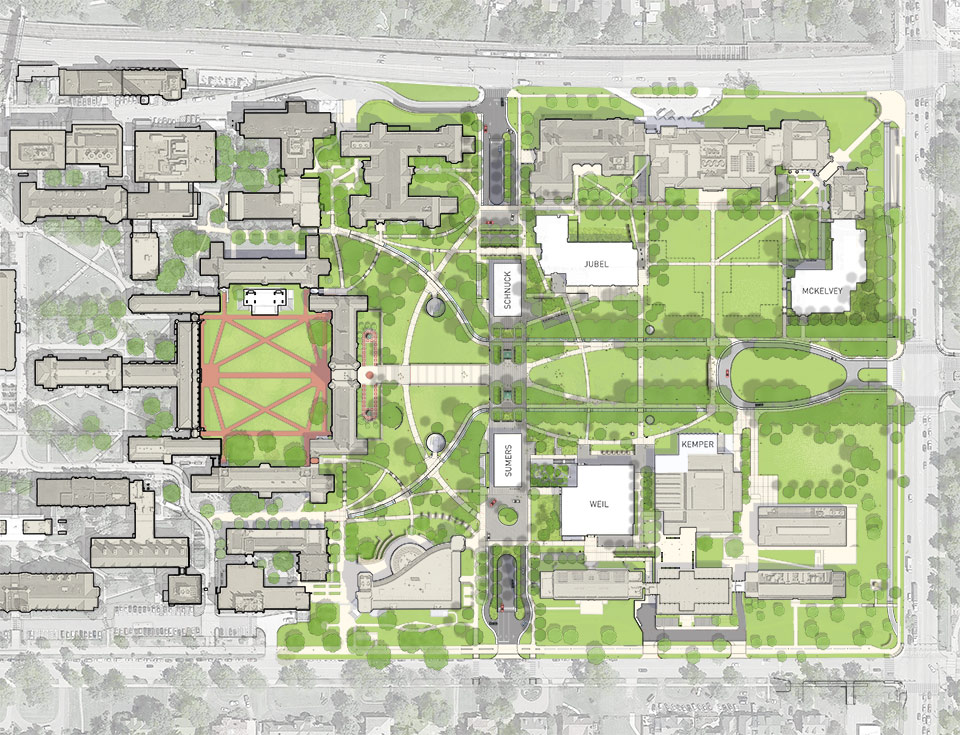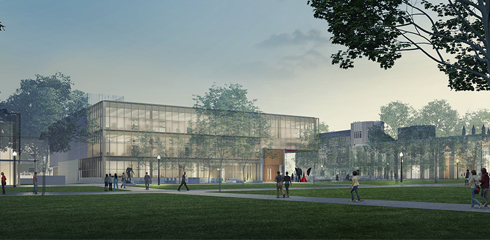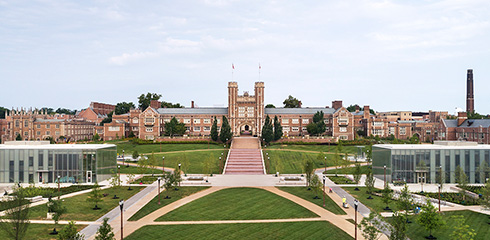East End Transformation Receives Excellence in Planning Award
Weil Hall, a new facility for the Sam Fox School of Design & Visual Arts, is one of five new buildings on the East End at Washington University in St. Louis. ©Peter Aaron/OTTO
The East End Transformation of the Danforth Campus at Washington University in St. Louis was awarded an Excellence in Planning Honor for 2020 from the Society for College and University Planning (SCUP). The award recognizes excellence in creating an integrated plan for an entire geographic or functional area of a campus. Five design firms, including KieranTimberlake, Michael Vergason Landscape Architects, BNIM, Moore Ruble Yudell, and Perkins Eastman worked together to fulfill the vision.
The site plan for the Danforth Campus, showing an expansive landscape and five new buildings. 790 parking spaces were moved underground to make way for the transformed East End.
The East End Transformation reimagines a land area that constitutes one-fifth of the total campus at WashU. James Kolker, FAIA, University Architect, says the project is the most significant change to the campus in its 120-year history. Five of eight major components in the transformation were designed by KieranTimberlake and completed in 2019—including four new and renovated buildings, and an underground parking garage that relocates significant surface parking to create an expansive park above.
An integrated planning process brought together design professionals with university administrators, trustees, and academic leadership in regular collaborative work sessions that fostered dialogue and debate.
The result, according to Kolker, is a “thriving, active, and memorable community of landscapes, academic facilities, amenities, and outstanding exterior and interior places.”
He says, “The plan builds upon a well-established history, while addressing and celebrating contemporary issues and priorities, including sustainability, high-tech laboratories, inspiring academic space, and necessities including parking and the need to plan for future adaptive reuse. The reimagined landscape is used as a framework that unites a range of places of different scales and qualities, and, together with the new buildings, highlights the iconic heritage of the historic fabric and balances it with the contemporary. The result is a campus precinct that pivots from the past century to the future decades. It is both familiar and new, welcomes all, and expresses the academic rigor and intellectual curiosity for which the university is known.”







